In the world of chess, while the excitement of the opening and middlegame stages is undeniable, it’s the endgame that can truly empower beginner players. It’s in this final chapter of a chess match that fundamental strategies, essential techniques, and key principles start to shine.
In this blog post, we embark on a journey into the fascinating world of chess endgames, unveiling the core principles that will guide you toward victory. As a beginner looking to refine your strategies, this exploration of endgame basics will enhance your understanding and elevate your gameplay. Join us as we navigate the checkered battlefield, where every move counts, and where mastering the endgame can be your path to triumph.
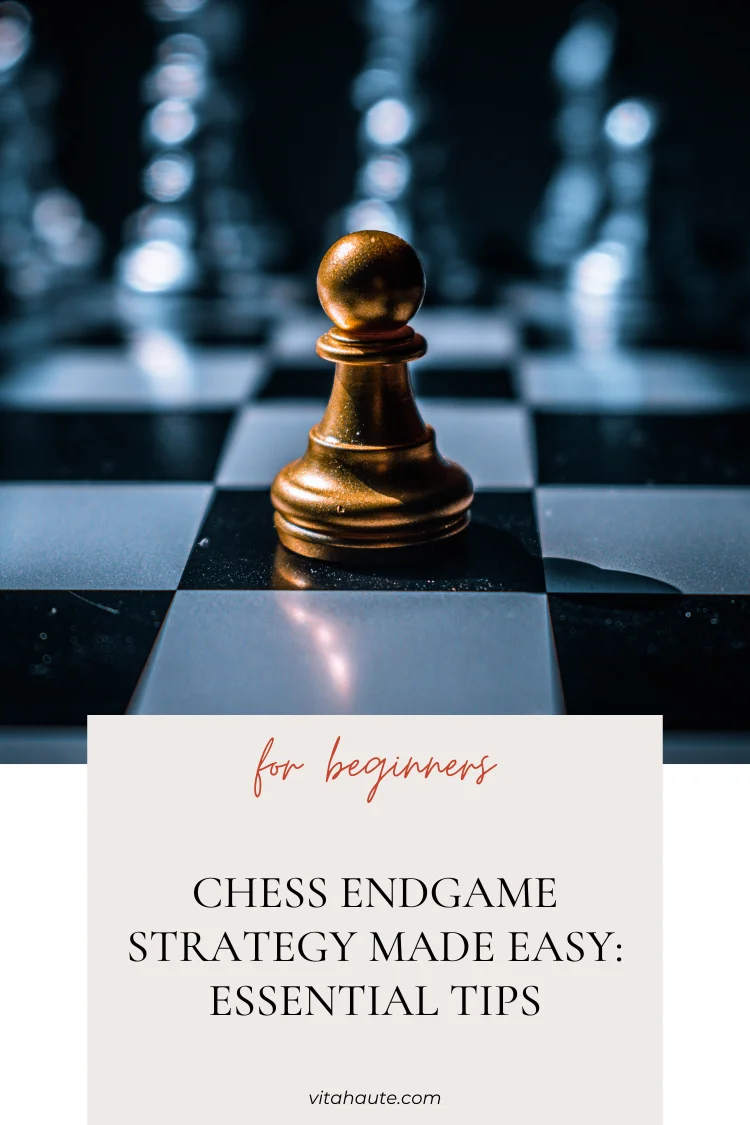
This post contains affiliate links. Please read our disclosure.
King and Pawn vs. King
One of the fundamental chess endgame scenarios that every beginner should master is the “King and Pawn vs. King.” This seemingly simple setup holds the key to victory in countless endgame situations. Understanding the principles and techniques involved in this scenario can make the difference between a win and a draw.
Basic Principle
In a King and Pawn vs. King endgame, the player with the extra Pawn often has a significant advantage. The basic principle is to advance the Pawn toward promotion while ensuring your own King’s safety.
Key Concepts
- The Opposition: Achieving the opposition means placing your King directly in front of your opponent’s King, with one square in between. This grants you more maneuverability and allows you to advance your Pawn effectively.
- The Square Rule: To promote your Pawn successfully, your King must control the square in front of it. This ensures that the opponent’s King cannot block your Pawn’s path.
- Zugzwang: As the game progresses, create positions where your opponent is forced into a disadvantageous move, leading to zugzwang. This tactic can help you advance your Pawn or improve your position.
- Triangulation: A sophisticated technique where you purposely move your King in a triangular pattern to lose a tempo, putting your opponent in a zugzwang position.
- The Opposition on the Edge: When your opponent’s King is pushed to the board’s edge, achieving the opposition becomes even more critical. It can lead to a successful breakthrough.
- Stalemate Trick: Be cautious of stalemate tricks your opponent might attempt, especially when promoting your pawn. Ensure that your King can support the Pawn’s promotion safely.
Example Position
In this example, it’s White’s turn to move. Can you find the winning sequence that leads to a successful promotion for White’s pawn?
Practice and Mastery
Mastering the King and Pawn vs. King endgame is essential for all chess players. It’s a cornerstone of endgame strategy and can often be the difference between victory and a draw. Practice these concepts, and you’ll be well on your way to becoming a proficient chess endgame player.
Rook Endgames
Mastering Rook endgames is a pivotal step in your journey to becoming a proficient chess player. These complex endgames often arise in the latter stages of a game and require careful strategy and precise execution. In this section, we explore key principles and techniques for navigating Rook endgames successfully.
Basic Principle
In Rook endgames, your Rook becomes a formidable force, and its mobility is crucial. Activating your rook, controlling open files, and coordinating with your King are fundamental aspects of achieving success.
Key Concepts
- The Seventh Rank: In Rook endgames, the seventh rank (for White) or the second rank (for Black) is often the battleground. Placing your Rook on this rank can create threats and put significant pressure on your opponent.
- King Activity: In Rook endgames, your King should be an active participant. Centralizing your King and connecting it with your Rook is vital for a strong endgame performance.
- Conversion: Converting material advantage into a win is an essential skill. Learning how to convert extra pawns or other advantages into a favorable outcome is a hallmark of a strong Rook endgame player.
- Stalemate Awareness: Rook endgames can often feature tricky stalemate ideas. Be aware of these possibilities, both for your benefit and to avoid falling into a stalemate trap.
- Rook Checks and Pins: Utilize your Rook to deliver checks and create pins that restrict your opponent’s King. This can lead to favorable tactical opportunities.
- Active Defense: If you’re on the defensive side, look for opportunities to create counterplay and complications. Active defense can sometimes lead to drawing chances.
Example Position:
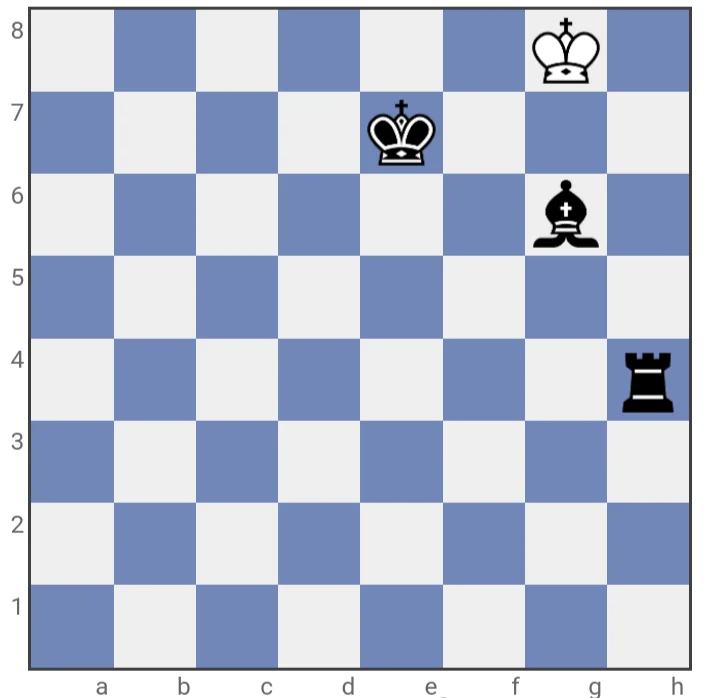
In this example, it’s Black’s turn to move. Can Black find the move that secures a winning advantage in this Rook Endgame?
Practice and Mastery:
Exploring Rook Endgames and mastering these concepts will significantly enhance your endgame skills. Remember that practice and a deep understanding of Rook Endgames can lead to more victories and improved overall chess performance.
Stay tuned for more essential endgame concepts for beginners in our upcoming articles!
Stalemate and Zugzwang
Understanding the concepts of Stalemate and Zugzwang is crucial in chess endgames. These ideas often determine the outcome of a game, and knowing how to recognize and utilize them can be the key to victory.
Stalemate:
Stalemate occurs when a player’s King has no legal moves left and isn’t in check. In this situation, the game ends in a draw. Recognizing opportunities for stalemate can save a game that seems lost, while avoiding falling into a stalemate trap is equally important.
Zugzwang:
Zugzwang is a German term that signifies a position where any move a player makes puts them at a disadvantage. Understanding zugzwang is crucial for creating winning chances in seemingly equal positions. By forcing your opponent into a disadvantageous move, you can gain a significant advantage.
Key Concepts:
- Stalemate Tricks: Be vigilant for stalemate opportunities in your games, both defensively and offensively. Creating stalemate threats can lead to surprising draws or even wins in challenging positions.
- Zugzwang Scenarios: Identify positions where zugzwang might come into play. In these situations, you can force your opponent into making unfavorable moves, leading to a more advantageous position for you.
- Endgame Tactics: Stalemate and zugzwang tactics are common in endgames. Familiarize yourself with these tactics to navigate endgames effectively.
Example Position:
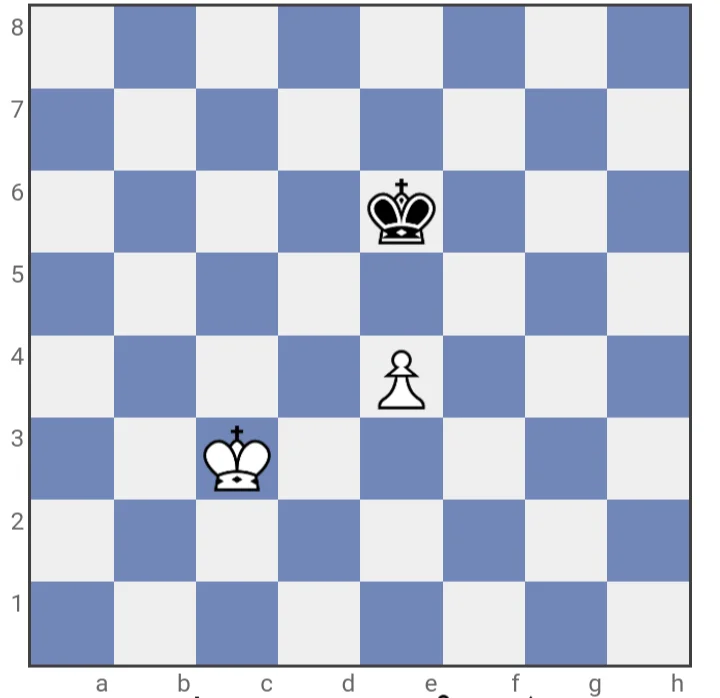
In this example, it’s White’s turn to move. Can White find a move that exploits zugzwang and gains a significant advantage?
Understanding and applying the concepts of stalemate and zugzwang can be game-changers in your chess journey. Whether you’re defending a tricky position or seeking opportunities to outmaneuver your opponent, these concepts are invaluable tools in your chess arsenal.
Passed Pawns
Understanding the concept of passed Pawns is essential in chess endgames. Passed Pawns, those Pawns that have no opposing pawns blocking their advance, have the potential to become powerful weapons. Learning how to support and promote a passed Pawn can lead to game-winning advantages.
Basic Principle:
The key principle in dealing with passed pawns is to advance them while ensuring they are well-supported and protected. Passed Pawns can often become the deciding factor in an endgame.
Key Concepts:
- Supporting Passed Pawns: Ensure your passed Pawn is well-supported by your King and other pieces. A well-supported passed Pawn can march down the board and potentially promote to a Queen.
- Blockading Opponent’s Passed Pawns: When facing your opponent’s passed Pawn, consider blockading it with your pieces or King. This can prevent its advance and give you time to create counterplay.
- Creating Passed Pawns: In the middle game, look for opportunities to create passed pawns. Advancing your pawns strategically can lead to advantageous endgame positions.
Example Position:
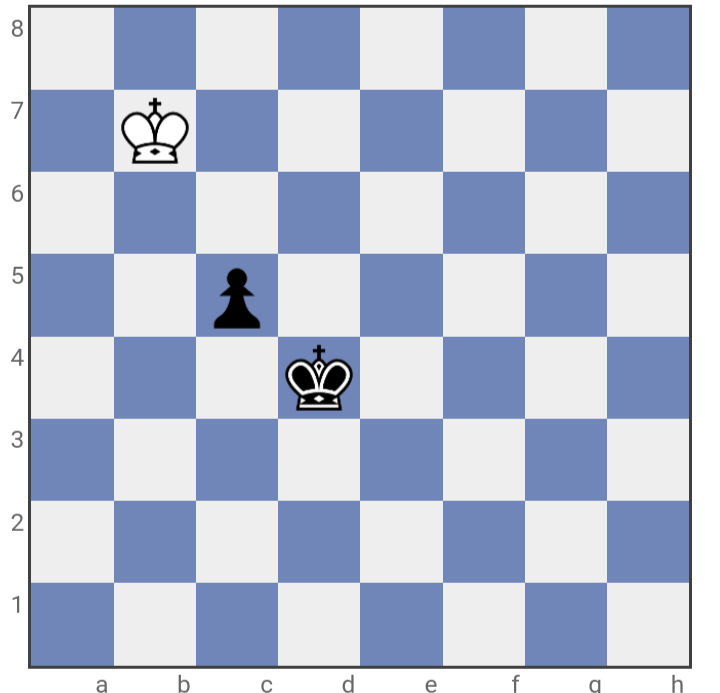
In this example, it’s Black’s turn to move. Can Black find a move that supports the passed Pawn on c5 and increases the winning chances?
Two Bishops vs. Bishop and Knight
The endgame scenario of “Two Bishops vs. Bishop and Knight” presents unique challenges and opportunities. Understanding how to leverage the advantages of having two bishops or the defensive capabilities of a Bishop and Knight duo is essential in these endgames.
Basic Principle:
When you possess two bishops, aim to open up the position and create open diagonals for your bishops to dominate. If you have a Bishop and knight, focus on coordinating them effectively to control key squares.
Key Concepts:
- Open Positions for Two Bishops: Two bishops excel in open positions with long diagonals. Look for opportunities to open up the board.
- Coordination with Bishop and Knight: If you have a Bishop and knight, coordinate their movements to control important squares. They can complement each other’s strengths.
- Conversion: When you have a material advantage in this scenario, convert it into a winning position. Accurate piece coordination can lead to victory.
Example Position:
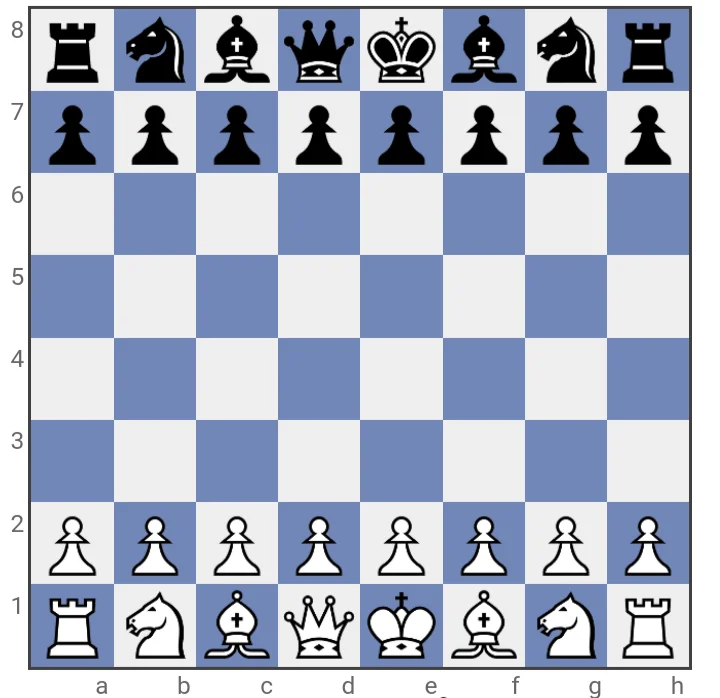
In this example, it’s White’s turn to move. Can White find a move that maximizes the potential of having two bishops in this endgame?
Basic Pawn Structures
Understanding basic Pawn structures is essential for making informed decisions in chess endgames. Your choice of Pawn structure can significantly impact the outcome of the game. In this section, we explore common Pawn structures and their implications.
Basic Principle:
Each Pawn structure has its strengths and weaknesses. Recognize the strengths of your Pawn structure and exploit the weaknesses in your opponent’s structure.
Key Concepts:
- Isolated Pawns: Isolated pawns can be vulnerable targets. Attack them if your opponent has weaknesses in their Pawn structure.
- Pawn Chains: Pawn chains provide solid Pawn structures. Use them to control key squares and restrict your opponent’s pieces.
- Doubled Pawns: Doubled pawns can be a liability. Exploit the weaknesses in your opponent’s Pawn structure when they have doubled pawns.
Example Position:
In the following example, it’s Black’s turn to move. Can Black take advantage of the doubled pawns in White’s structure?
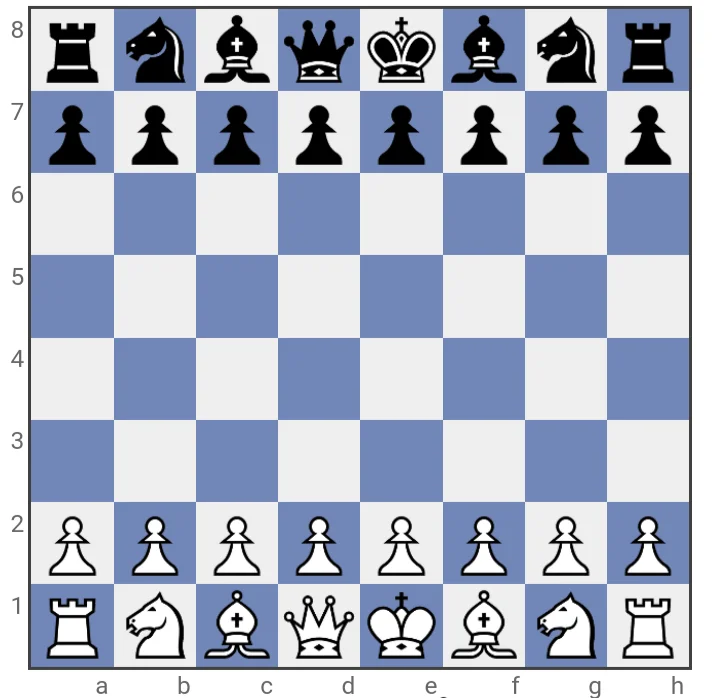
Philidor and Lucena Positions
Philidor and Lucena positions are fundamental in the realm of Rook endgames. These positions are intricate and demand precision, but mastering them can be a game-changer in your chess journey. Let’s delve into these endgame scenarios:
Philidor Position:
The Philidor position is a defensive setup for the side with the rook. It’s crucial to understand this position as it often leads to a draw from seemingly lost positions. The defending side’s King is placed in front of their pawn, creating a fortress that can be challenging to breach. By knowing how to set up and defend the Philidor position, you can escape with draws even in dire circumstances.
Lucena Position:
The Lucena position, on the other hand, is all about converting an advantage into a win. In this position, the stronger side with the Rook aims to promote their Pawn to a Queen while ensuring that their King remains safe. Learning the intricate maneuvering required to reach and execute the Lucena position can secure many victories in Rook endgames.
Key Concepts:
- Philidor Defense: Learn how to defend stubbornly using the Philidor setup to salvage draws in challenging endgames.
- Leveraging the Lucena: Understand the steps to reach the Lucena position and execute the winning plan efficiently.
- Transitioning: Recognize when to switch between the Philidor and Lucena positions based on the evolving circumstances of the game.
Rook and Bishop vs. Rook
The endgame scenario of “Rook and Bishop vs. Rook” is intricate and often leads to fascinating battles. This situation demands precise coordination of your Rook and Bishop to achieve victory. Let’s explore the nuances of this challenging endgame:
Basic Principle:
When you find yourself with a Rook and a Bishop against your opponent’s lone rook, the main objective is to checkmate your opponent’s King. The combination of a Rook and a Bishop can deliver a checkmate, but you need to coordinate them effectively.
Key Concepts:
- Creating Checkmating Nets: Understand how to use your Rook and Bishop to restrict your opponent’s King and create checkmating patterns.
- King Safety: Ensure the safety of your own King while coordinating your pieces for a successful checkmate.
- Patient Play: Sometimes, it takes patient maneuvering to set up the checkmate. Avoid unnecessary risks and maintain control.
Corresponding Squares
Corresponding squares are a fundamental concept in chess endgames. Recognizing and controlling these squares can be the key to domination and creating winning opportunities.
Basic Principle:
Corresponding squares are squares that have the same color on both sides of the board. Understanding their importance comes into play during endgames when precise piece coordination is critical.
Key Concepts:
- Domination: Controlling corresponding squares can lead to piece domination, limiting your opponent’s options.
- King Activity: Utilize corresponding squares to activate your King and support your pieces effectively.
- Creating Zugzwang: In some situations, controlling corresponding squares can force your opponent into a zugzwang, where any move they make weakens their position.
King and Queen vs. King and Rook
The “King and Queen vs. King and Rook” endgame is intricate and demands precision. Knowing how to checkmate efficiently in this scenario is crucial for strong endgame play.
Basic Principle:
In this endgame, the side with the King and Queen aims to checkmate the opponent’s King and rook. Precise coordination and calculation are essential for achieving this checkmate efficiently.
Key Concepts:
- Centralizing the Queen: Place your Queen in a central position to control key squares and restrict the opponent’s King.
- King Safety: Ensure the safety of your own King while delivering checkmate threats to the opponent’s King.
- Calculating Variations: Calculate variations carefully to avoid stalemate traps and ensure a successful checkmate.
King and Two Knights vs. King
The endgame scenario of “King and Two Knights vs. King” is a unique one, often leading to drawn positions. Understanding the intricacies of this endgame is essential, as it demands precise coordination of your two Knights to secure a draw or potentially convert it into a win.
Basic Principle:
In this endgame, the side with the King and two Knights aims to hold a draw. The knights’ unique movement capabilities make it challenging for the opposing King to deliver checkmate. However, precise coordination and piece activity are crucial.
Key Concepts:
- Centralized King: Place your King in a central position to support your Knights and restrict the opponent’s King.
- Coordinated Knights: Coordinate your Knights to control key squares and limit the opponent’s King’s mobility.
- Opposition: Understanding the concept of opposition is vital in this endgame, as it can help you maintain a draw or create winning chances.
King and Bishop vs. King and Knight
The endgame scenario of “King and Bishop vs. King and Knight” presents unique challenges and opportunities. Knowing how to utilize the strengths of your King and Bishop or coordinate your pieces effectively is crucial for success.
Basic Principle:
In this endgame, the side with the King and Bisho aims to use the Bishop’s long-range capabilities to secure a win. The coordination between the King and Bishop is essential, as is understanding the Knight’s limitations.
Key Concepts:
- Bishop’s Dominance: Utilize the Bishop’s ability to control long diagonals and restrict the opponent’s King’s mobility.
- Coordinated Play: Coordinate your King and Bishop effectively to create threats and opportunities for checkmate.
- Restricting the Knight: Limit the opponent’s Knight’s effectiveness by controlling key squares and creating favorable Pawn structures.
Triangulation
Triangulation is a critical concept in chess endgames, particularly in King and Pawn endings. Understanding how to use triangulation as a strategic maneuver can help you gain a significant advantage or secure a draw.
Basic Principle:
Triangulation involves maneuvering your King in a triangular pattern to put your opponent in a zugzwang position, where any move they make weakens their position. It’s a strategic tool to gain a tempo and achieve your desired position.
Key Concepts:
- Zugzwang Creation: Understand how triangulation can force your opponent into zugzwang, compelling them to make unfavorable moves.
- Tempo Gain: Utilize triangulation to gain a tempo, allowing you to achieve a more favorable position or goal.
- King and Pawn Endgames: Triangulation is particularly useful in King and Pawn endgames, where precise maneuvering can determine the outcome.
Conclusion
Chess endgames are the ultimate test of a player’s skill and understanding of the game. The concepts we’ve explored in this blog post lay the foundation for success in these critical final phases. Whether you’re striving to checkmate with a King and Pawn or master complex Rook endings, these fundamental principles will serve as your guiding lights. The endgame isn’t just the end; it’s where victory is often decided. So, embrace these concepts, study them, and let them be your allies on your chess journey. With dedication and knowledge, you can become a formidable force in the world of chess endgames. Happy playing!